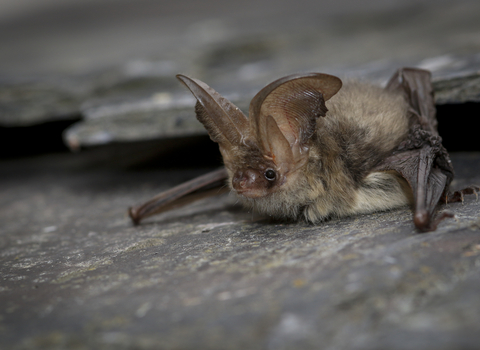
©Tom Marshall
Brown long-eared bat
The brown long-eared bat certainly lives up to its name: its ears are nearly as long as its body! Look out for it feeding along hedgerows, and in gardens and woodland.
Scientific name
Plecotus auritusWhen to see
April to OctoberSpecies information
Category
Statistics
Length: 3.7-5.2cmWingspan: 20-30cm
Weight: 6-12g
Average lifespan: 4-5 years
Protected in the UK under the Wildlife and Countryside Act, 1981. Priority Species under the UK Post-2010 Biodiversity Framework. European Protected Species under Annex IV of the European Habitats Directive.
